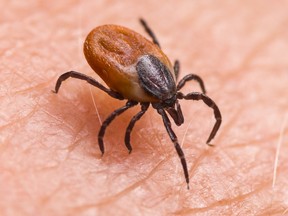“Anaplasmosis, a potentially life-threatening illness caused by the bacteria Anaplasma phagocytophilum and spread by black-legged ticks, is on the rise in southern Ontario. As the first case was detected in 2018, the number of cases skyrocketed to 40 in 2023, causing concern among public health officials.
Understanding Anaplasmosis
Anaplasmosis can lead to severe respiratory illness and may be fatal, particularly for individuals with compromised immune systems. This disease, along with Lyme disease, babesiosis, and Powassan virus, has been added to Ontario’s Health Protection and Promotion Act, highlighting their significance to public health.
The Habitat of Black-Legged Ticks
Black-legged ticks, also known as deer ticks, are commonly found in wooded and forested areas with thick underbrush. They also inhabit tall grasses, trails, fields, and areas with dead leaves. Taking precautions in these environments can help prevent tick bites and potential infections.
The Impact and Prevention of Anaplasmosis
While anaplasmosis was rare in Ontario a few years ago, the recent surge in cases raises concerns about the prevalence of tick-borne illnesses in the province. Areas like eastern Ontario and regions with established vector populations are at higher risk, especially during the warmer months.
Preventive measures such as covering up, using insect repellent with DEET, and conducting thorough tick checks can reduce the risk of contracting anaplasmosis and other tick-borne diseases. Promptly removing ticks and reporting bites to public health authorities are crucial steps in preventing the spread of infections.
Conclusion
The increase in anaplasmosis cases in Ontario serves as a reminder of the importance of vigilance in preventing tick-borne illnesses. By understanding the symptoms, habitats, and preventive measures associated with these diseases, individuals can take proactive steps to protect themselves and their communities. Stay informed, stay cautious, and stay safe in tick-prone areas to minimize the risk of anaplasmosis and other tick-borne diseases.”
Reference













